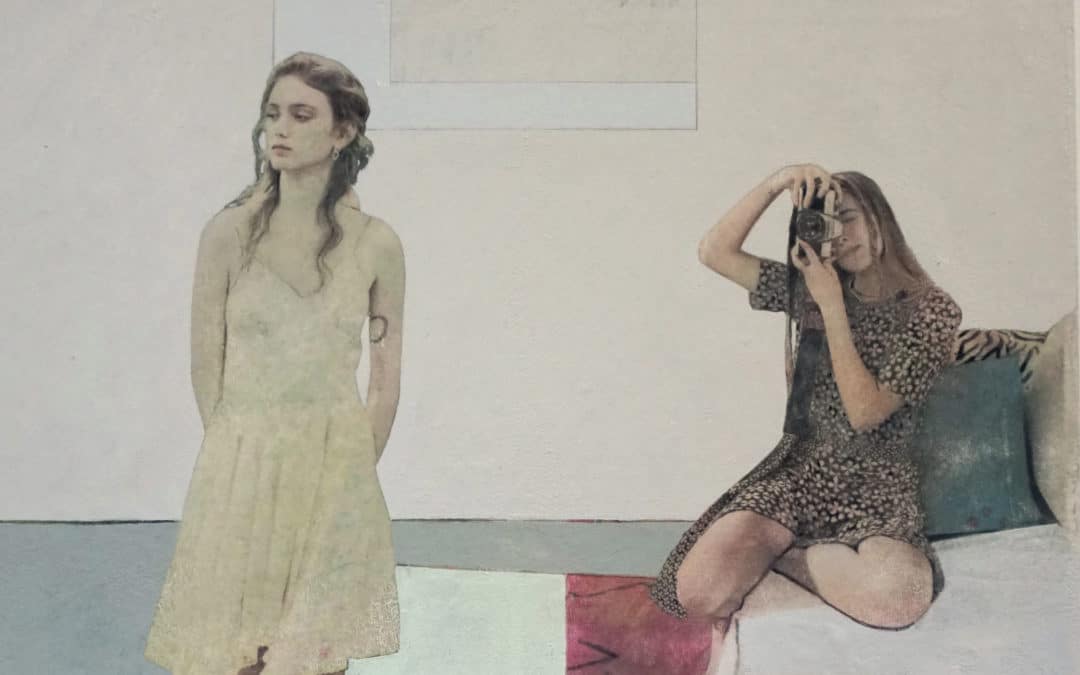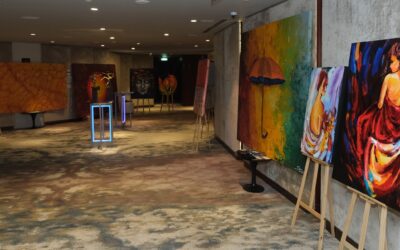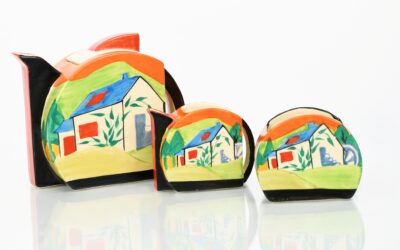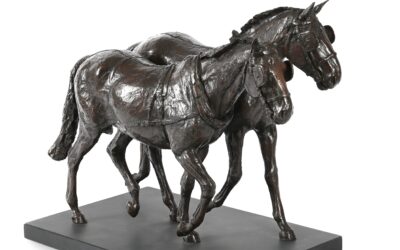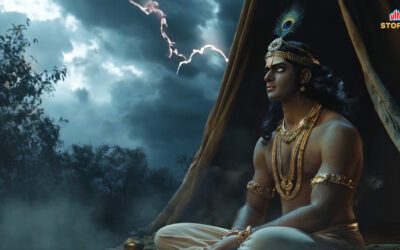Born in Tynemouth, UK in 1965, artist Peter McArdle has been painting since he was a child. His father, a painter (who studied under the pop artist Richard Hamilton) often took Peter along to his studio, setting him composition exercises and teaching how to paint. Whilst completing his studies in Fine Art, another mentor, the miniaturist painter and poet Jeffrey Johnson would come into his life, teaching in an atelier style the drawing skills and traditional techniques of painting that would become the backbone of his practice. He also introduced him to a world of poetry, literature and music that would become a central force in McArdle’s imaginative world. This marriage then, of the art of the Pop era (introduced to him by his father and the work of Richard Hamilton) with the traditional value of painting is a central motif of McArdle’s work.
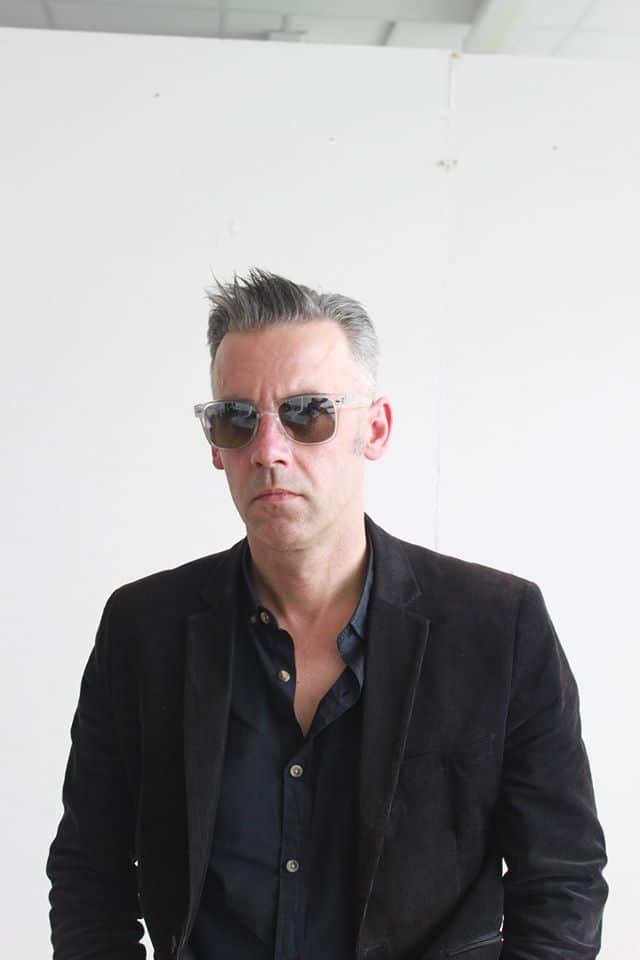
Peter McArdle
By the time he had completed his studies McArdle had been shortlisted for the Windsor and Newton Award, selected for a Discerning Eye exhibition and gained gallery representation. He went on to make and exhibit paintings for over 20 years, becoming recognized as a key figure of the Stuckist movement. He has exhibited in a variety of galleries and museums and his work is held in a number of private collections. He then took a sabbatical from exhibiting in order to dedicate his time to teaching, passing his considerable knowledge and experience on to the next generation. He returned to exhibiting in 2018, the latest chapter in a life that has been dedicated to his passion for painting and to art itself.
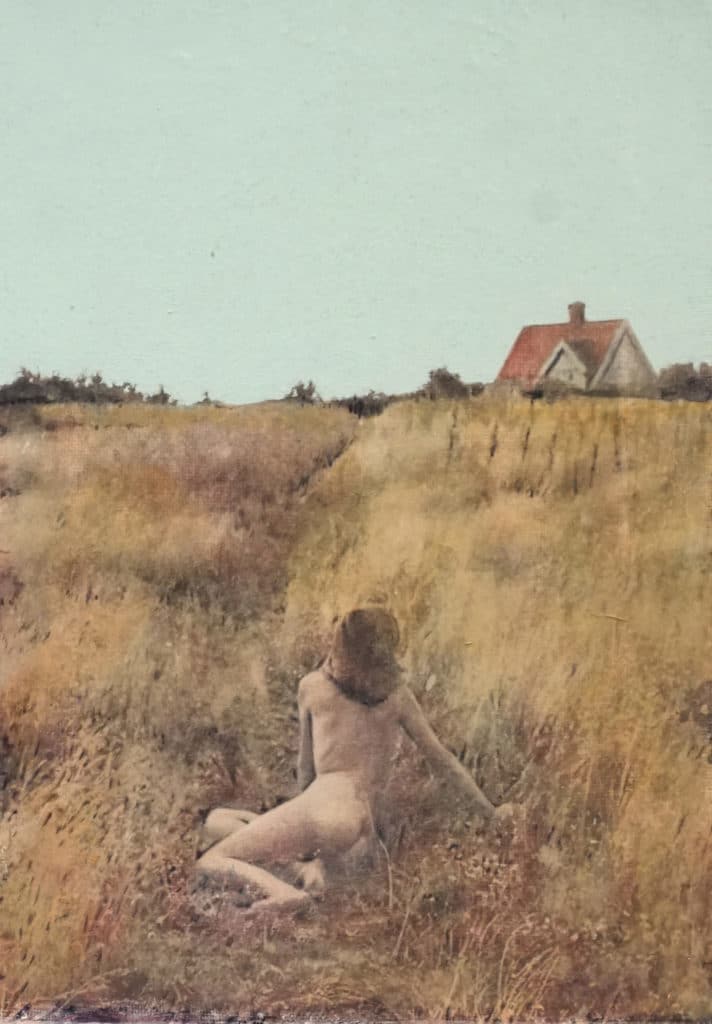
What’s your artistic background?
My father was an artist who studied with Richard Hamilton and Victor Passmore at Newcastle University in the late 1950’s .I consequently spent a lot of time in his studio as a child and he is responsible for the foundations of my art practice. Formally I have studied at undergraduate and post graduate levels at University.
What’s integral to the work of an artist?
I can only speak for myself here, as a painter and integral to my practice is the physical act of making, the daily practice of painting . Painting is a language that we understand through our engagement, a material engagement with.
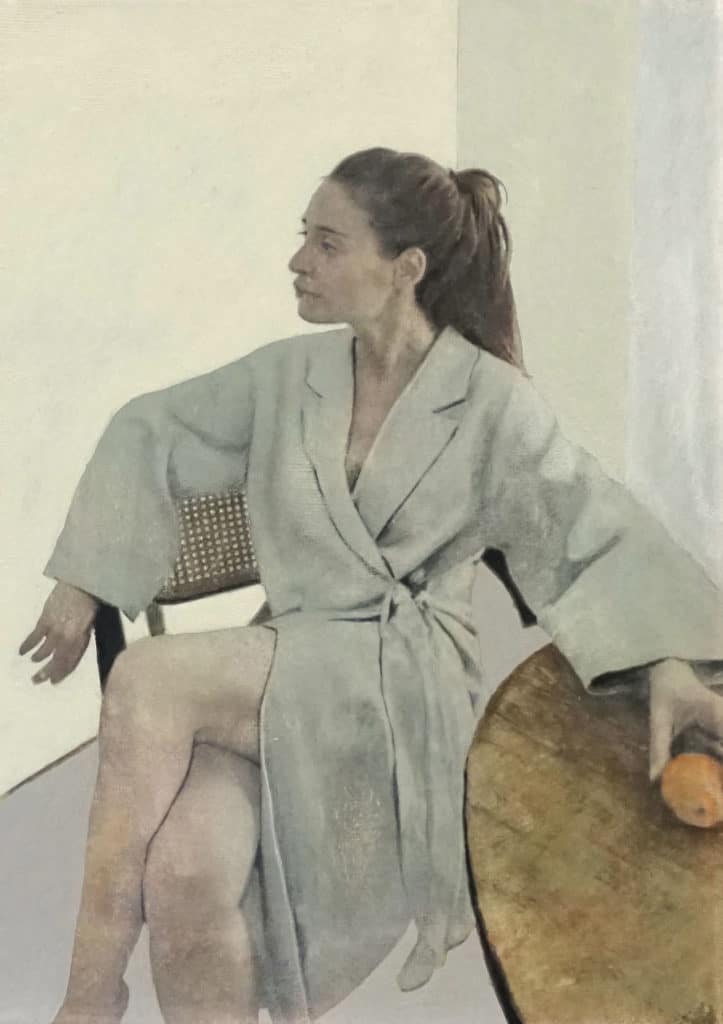
What role does the artist have in society?
I think the role varies depending on the artist, the art and the medium, not easily prescribed. For me I attempt to dismantle existing images and visual material, recombining elements to create new pictures of the world.
What art do you most identify with?
I engage with a broad spectrum of ‘Art’, in all its mediums and manifestations. But at my core is painting and the work of painters past and present.
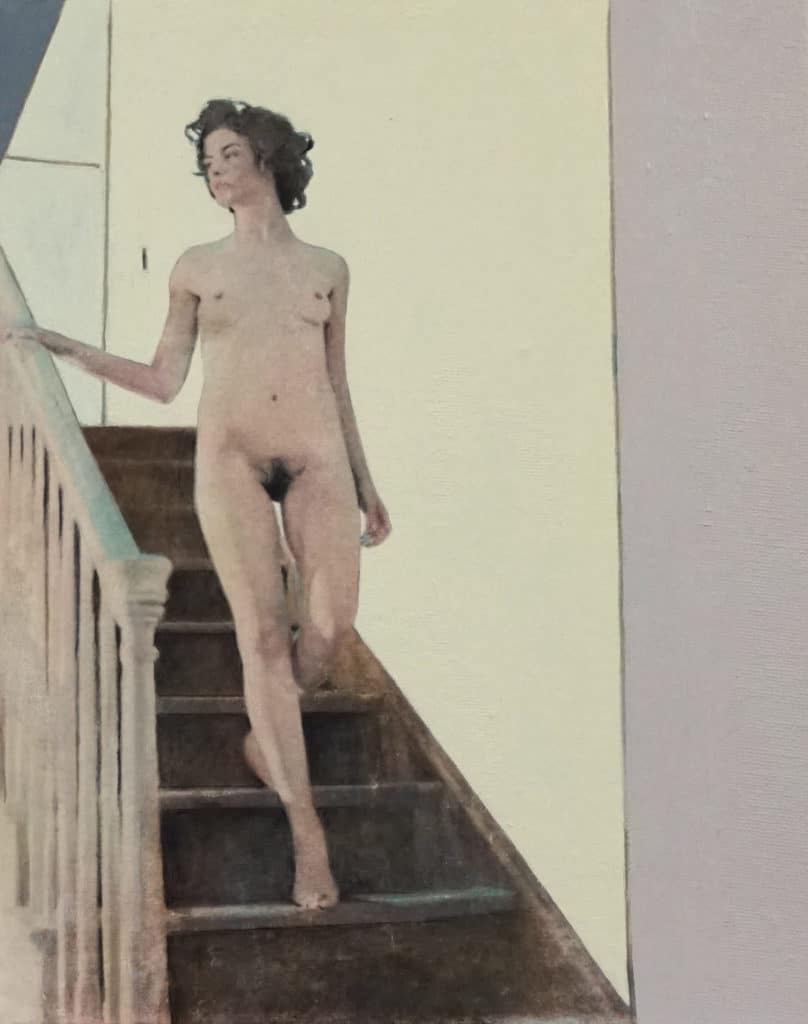
What themes do you pursue?
I am a picture maker and it is the images I am working on at any particular time that drive my practice forward. I tend not to think in themes, narratives or content for fear of grinding to a halt .
What’s your favourite art work?
There are many but two that I seem to return to time and again are Manet’s Le Dejeuner sur l herbe and Valasquez Las Mininas, both present riddles that can not be totally resolved and this appeals to me, forcing me to revisit.
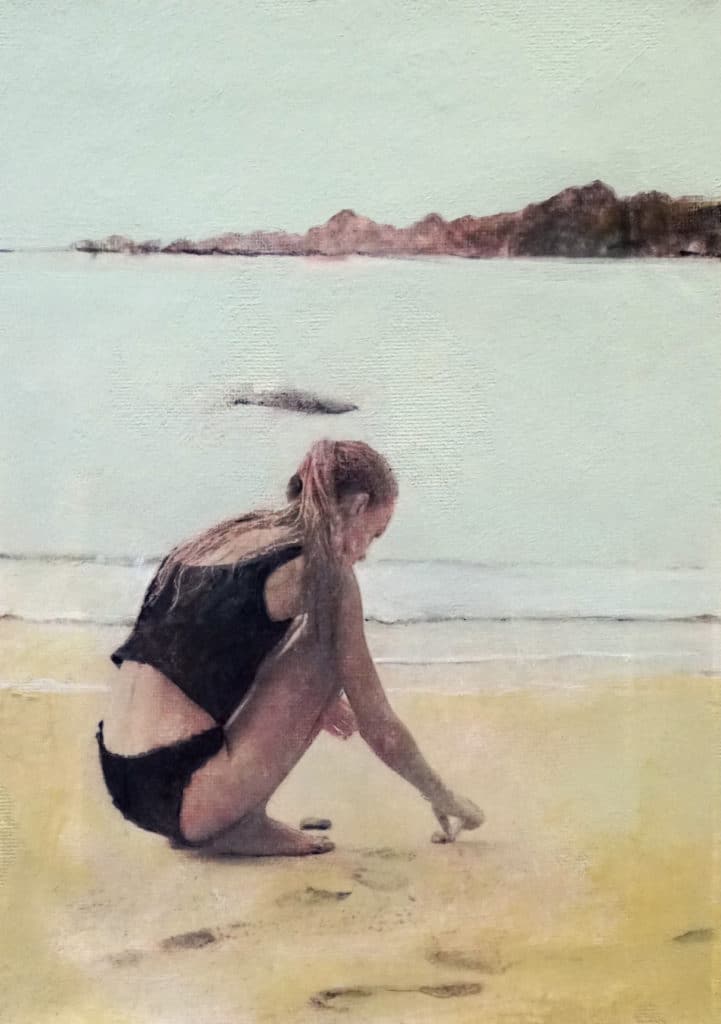
Describe a real-life situation that inspired you?
Not so easy to answer, my paintings tend to be about paintings, artifice and something outside real life. I do spend time with my wife and daughter at the beach as a means to escape the city and beaches and horizons seem to be a motif within my work.
What jobs have you done other than being an artist?
I haven’t, art has been my job all my adult life, like many artist I teach from time to time but here I am still employed as an artist.
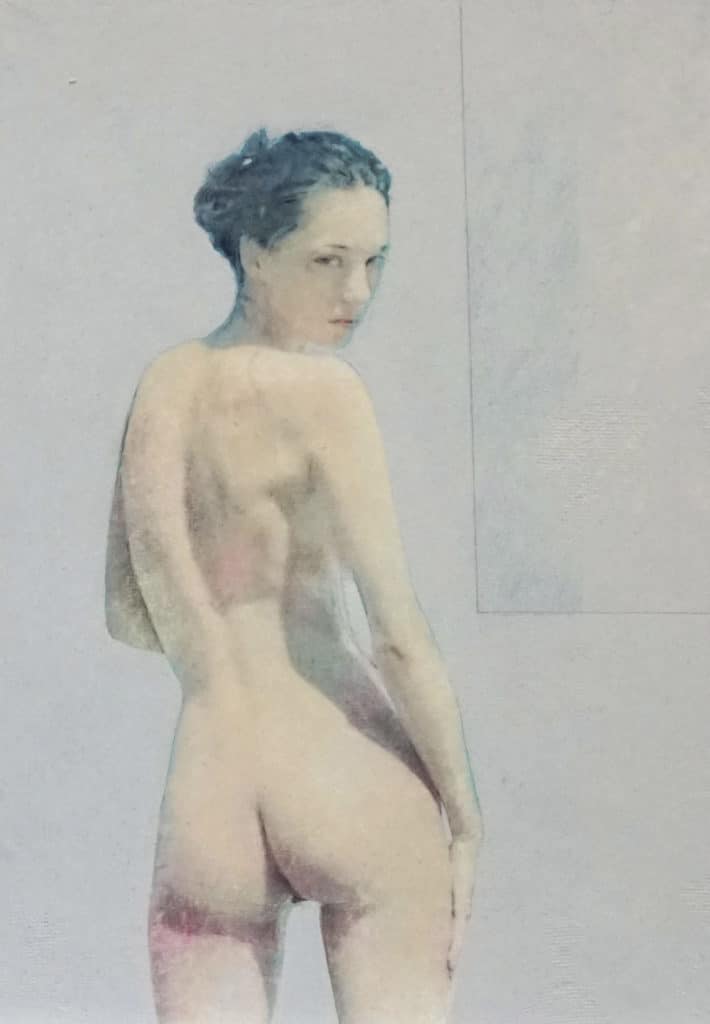
Why art?
I think this goes back to your first question and my father being an artist, It was all I really knew and my father was very supportive. It seemed a very natural career path to follow.
What is an artistic outlook on life?
Artists develop a lens to view the world , partly a way of critically thinking, a lateral approach to ideas etc and partly a creative approach, an ability to gather raw materials and re-present them in new and fascinating ways.
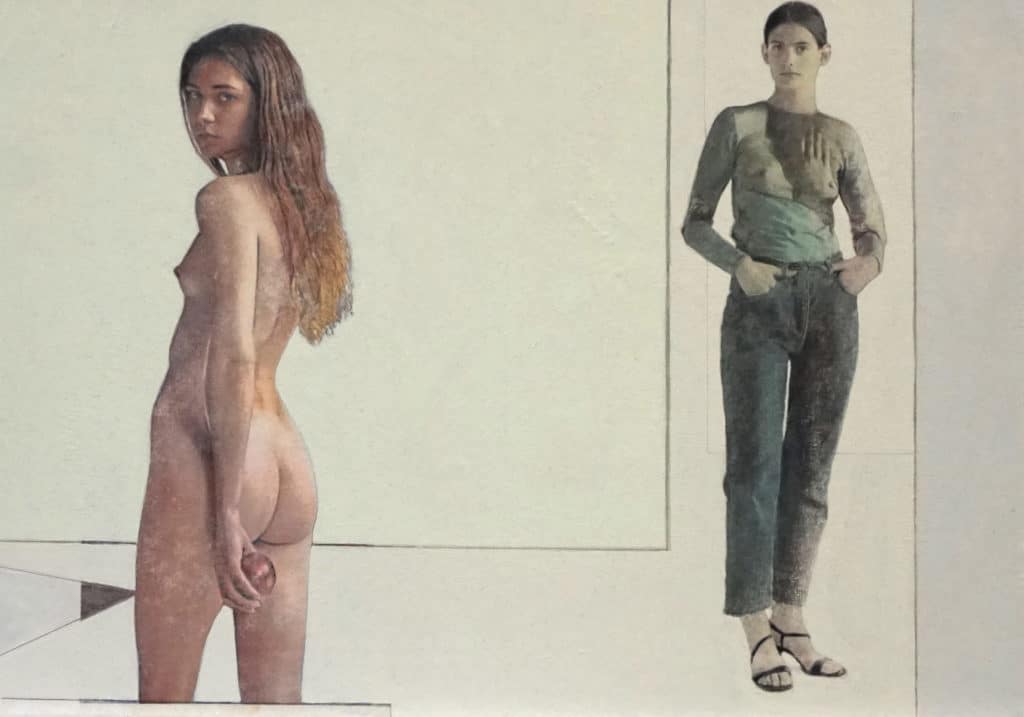
What memorable responses have you had to your work?
I am always surprised when people write about my work and Art Review magazine described my work as ‘auguring well for the future of British painting’, that has stuck in my memory.
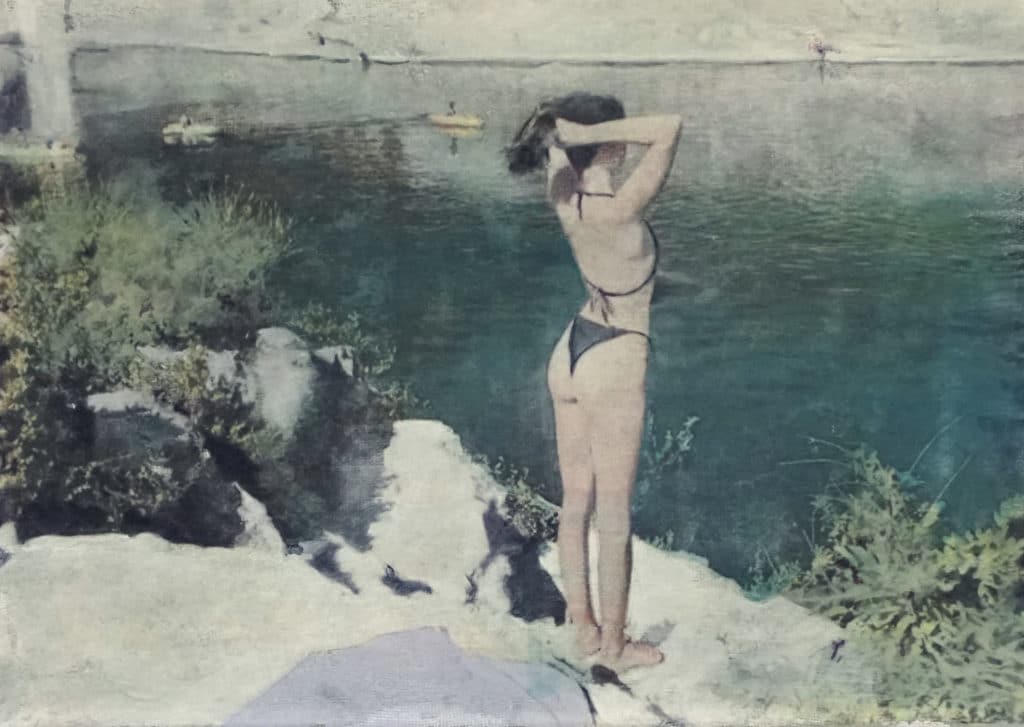
What food, drink, song inspires you?
Music is a companion in the studio, Schubert most frequently and quartets mostly. Poetry and literature probably have inspired me more than food
Is the artistic life lonely? What do you do to counteract it?
I enjoy the solitude of the studio and feel less comfortable with the social demands of the job, private views, networking etc. Mostly I counteract the loneliness by spending time outside the studio with my wife and children. My wife, Katie Hindle is also an artist so there is no real escape from the art life.
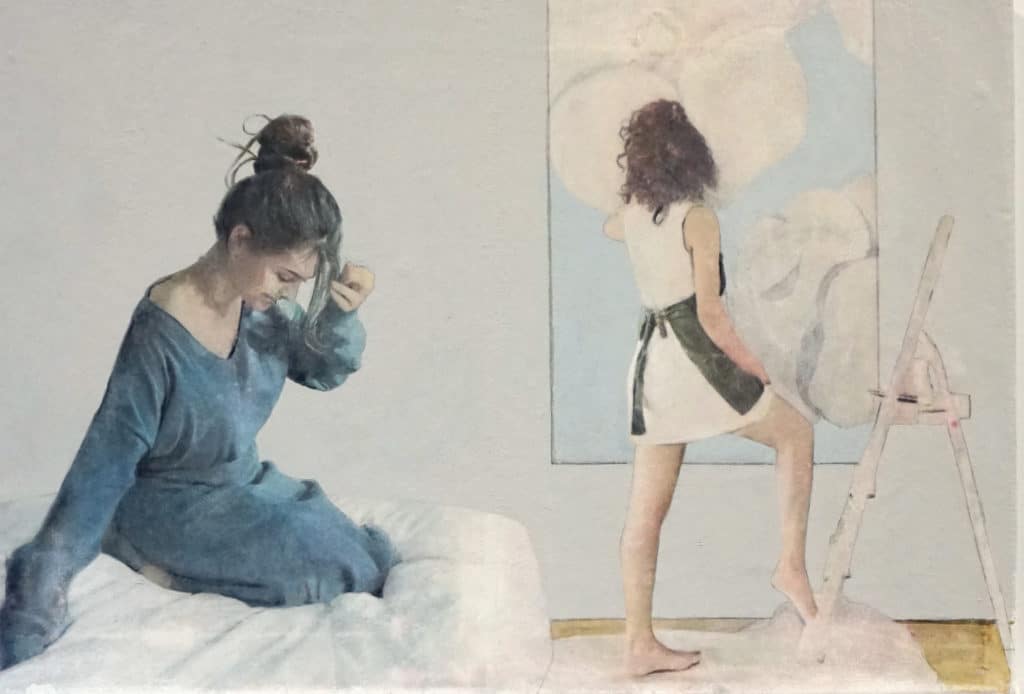
What do you dislike about the art world?
I try not to think about the ‘Art World’ and find it counter productive to do so, I suppose it is not unlike the world, society itself and shares similar problems, not so easy to navigate.
What do you dislike about your work?
As an artist I am running a business and I get frustrated by the amount of time taken up administrating this business, as work goes it is often all consuming and after 35 plus years there aren’t many breaks or holidays.
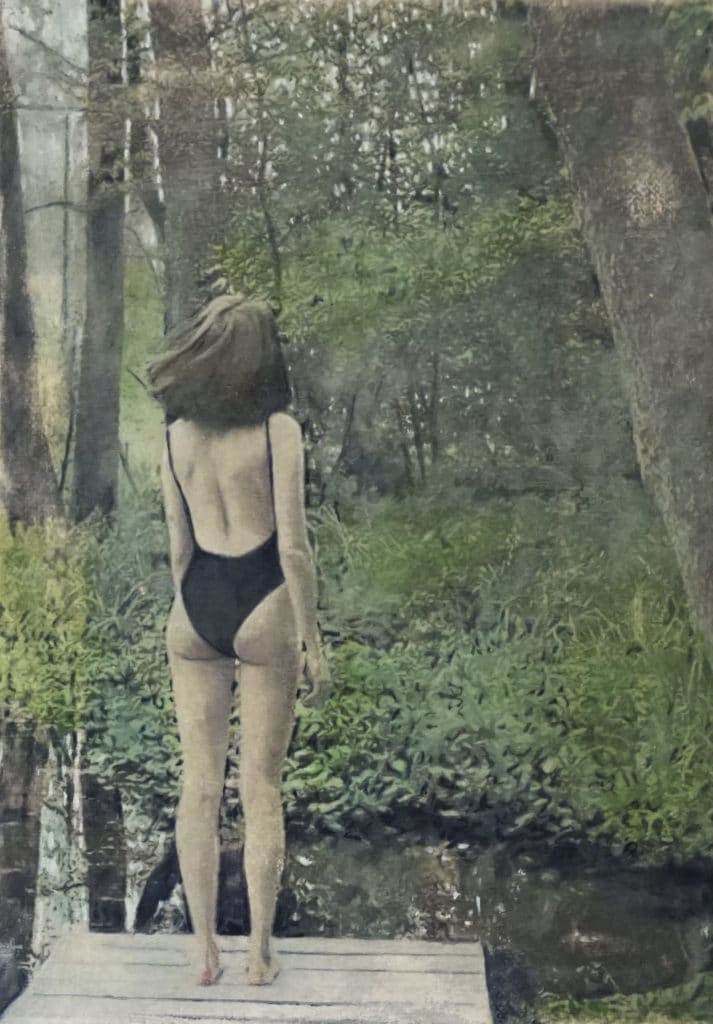
What do you like about your work?
Time spent in front of the easel away from the admin, lost in the process of painting.
Should art be funded?
I think it always has been, the church, rich patrons, arts councils etc . Art is a vital part of a healthy society and artists need to be paid for the work they make.
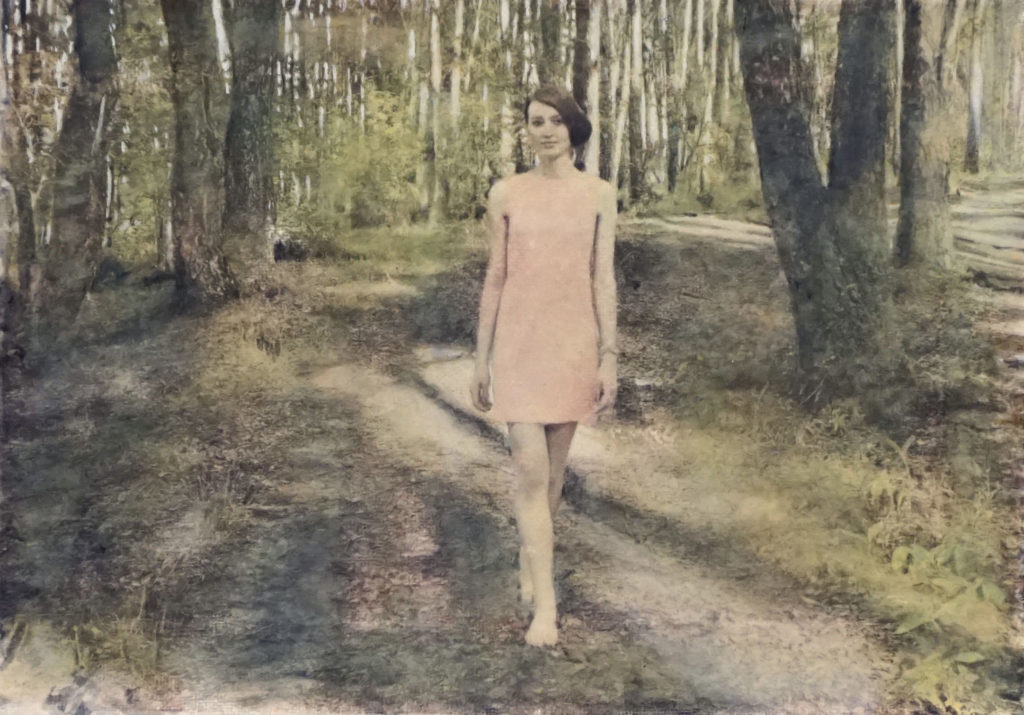
What role does art funding have?
Arts funding has enabled me to work on projects with no commercial outcome and be experimental. My collectors one or two of whom act as patrons allow me spend all my time in the studio painting. Whichever funding model an artist chooses it enables them to produce art. Funding also allows many great public galleries and museums to remain open, granting free access to art and culture.
What is your dream project?
I feel my studio practice, predominantly painting is the dream project and for many artists it is what we are constantly working on. After eighteen months of the pandemic and lock down I am hoping to work with curators and galleries again, participating in group and solo exhibitions again, presenting my work to collectors and the public. I like what Marcel Duchamp said about ‘The viewer completing the work of art’ and miss the physical engagement found in the gallery space.
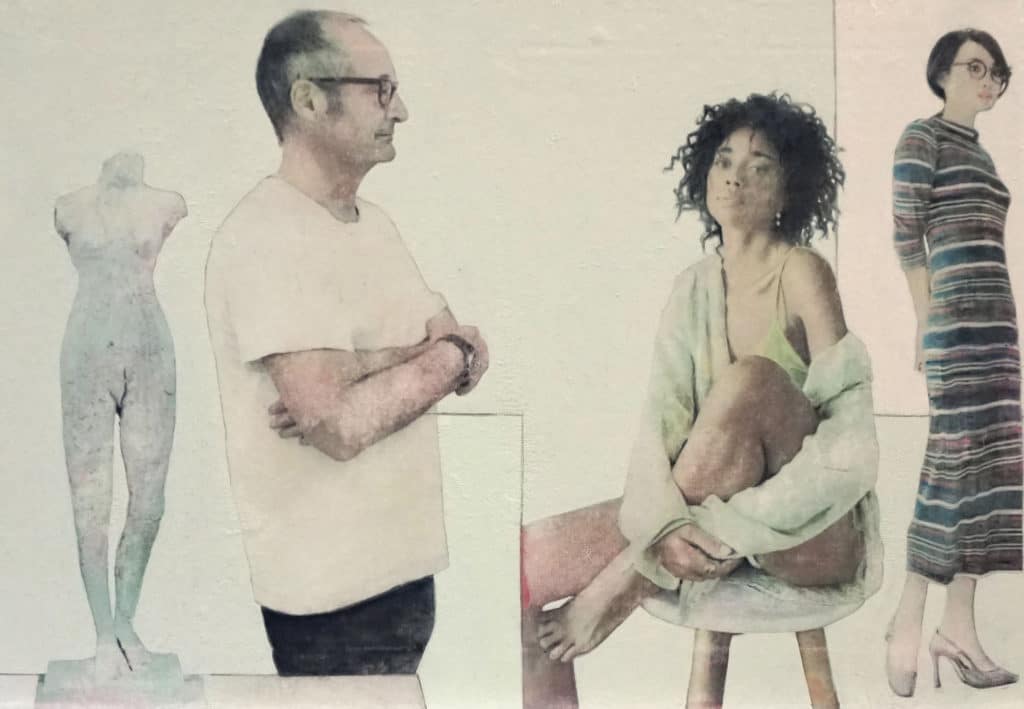
Name three artists you’d like to be compared to.
Compared to? I will aim high here, Vermeer, Richard Hamilton and R.B.Kitaj all firm favourites, books about whom can be found in my studio and bank of treasures.
Favourite or most inspirational place?
Paris where some of my favourite artists, writers and composers can be found. As I get older I find myself increasingly returning to the period of art that history refers to as modernism and Paris is the city to view many of it’s painters in the flesh.
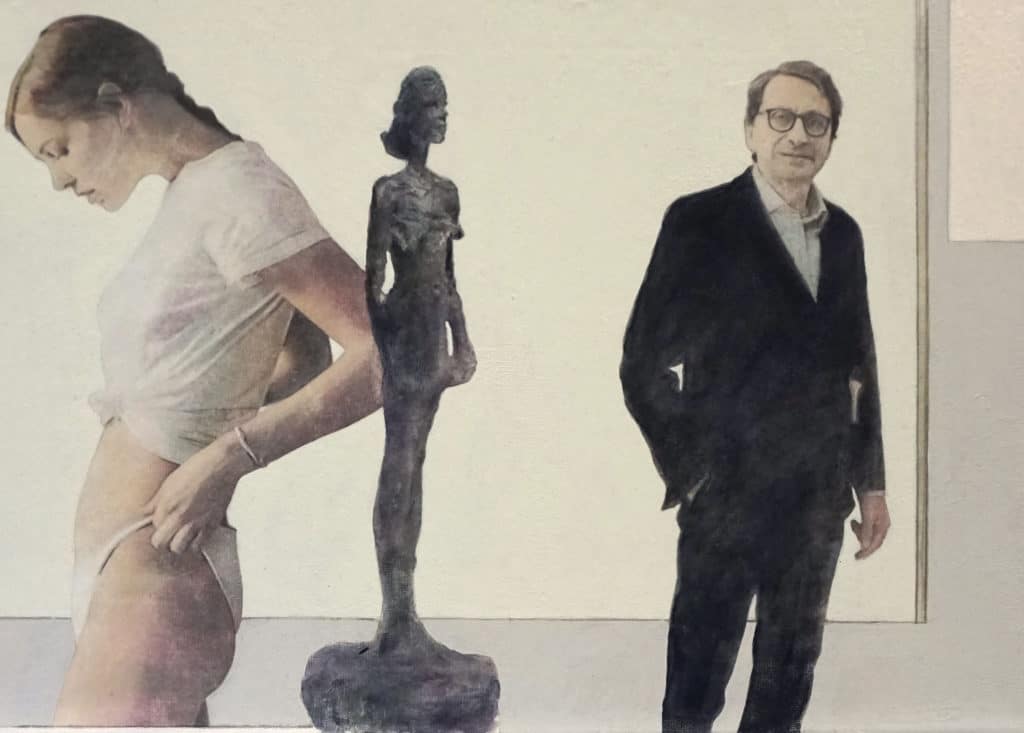
What’s the best piece of advice you’ve been given?
I wish I had a more philosophical answer here, but, to make a sign for my studio door saying ‘Do Not Disturb’. Time is precious and easily frittered away by unwanted studio visitors.
Professionally, what’s your goal?
With the easing of restrictions brought about due to Covid galleries are starting to re open and I am keen to resume exhibiting in physical spaces and spend less time in virtual spaces.
Future plans?
Aside from exhibiting I am looking to move to a larger studio space within the building I am currently in at Baltic39. Hopefully this won’t be a huge undertaking and then I can return to the easel and paint.
Fact Box : website at www.petermcardle.com and Instagram at peter.mcardle 2014


